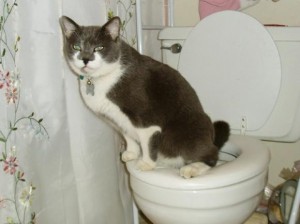This article on the next paragraphs relating to Should you flush animal waste down the toilet is exceedingly enjoyable. Try it and draw your own personal assumptions.

When it concerns throwing away waste, specifically animal waste, many individuals commonly turn to the practical choice of flushing it down the toilet. Nonetheless, this relatively simple service can have serious effects for the setting and public health. In this short article, we'll explore why flushing pet waste down the bathroom is a bad concept and supply alternative techniques for proper disposal.
Intro
Proper garbage disposal is important for maintaining ecological sustainability and public health. While it may seem safe to flush animal waste down the commode, it can result in numerous problems, both for the environment and human wellness.
Threats of flushing animal waste
Ecological influence
Flushing pet waste presents hazardous microorganisms and virus into rivers, which can negatively affect marine ecosystems. These microorganisms can pollute water resources and injury aquatic life, interrupting fragile ecological communities.
Public health problems
Pet waste includes hazardous microorganisms such as E. coli and Salmonella, which can present significant health dangers to human beings. Flushing animal waste down the bathroom can pollute water products, leading to the spread of conditions and infections.
Alternatives to flushing
As opposed to purging pet waste down the commode, there are numerous alternative disposal approaches that are more eco-friendly and sanitary.
Composting
Composting pet waste is an environmentally friendly method to get rid of it. By composting, organic matter is broken down into nutrient-rich dirt, which can be utilized to fertilize gardens and plants.
Land fill disposal
Disposing of pet waste in a land fill is one more option. While not as eco-friendly as composting, it is a much safer alternative to flushing, as it protects against the contamination of water sources.
Pet dog waste disposal systems
There are customized animal waste disposal systems readily available that safely and hygienically take care of animal waste. These systems commonly use enzymes to break down waste and remove odors.
Steps to appropriate animal garbage disposal
To make certain proper disposal of animal waste, comply with these steps:
Scooping and getting waste
Consistently scoop and bag pet waste making use of biodegradable bags. This prevents waste from contaminating the environment.
Making use of marked waste containers
Dispose of bagged animal waste in designated waste containers, such as garden compost containers or garbage dump bins. Stay clear of flushing it down the bathroom in any way costs.
Cleaning up litter boxes and pet dog areas routinely
Regularly clean can check here and animal locations to avoid the accumulation of waste and microorganisms. Use pet-safe cleansing products to preserve health.
Advantages of proper disposal techniques
Adopting appropriate disposal approaches for animal waste provides a number of benefits:
Minimized environmental pollution
Appropriate disposal approaches minimize the risk of environmental pollution, shielding waterways and ecological communities from contamination
Reduced danger of water contamination.
By staying clear of flushing animal waste down the toilet, the danger of water contamination is substantially decreased, guarding public health.
Boosted sanitation and hygiene
Proper disposal methods promote better hygiene and health, developing a more secure setting for both human beings and animals.
Conclusion
In conclusion, purging pet waste down the bathroom is damaging to the atmosphere and public health. By embracing alternate disposal methods and adhering to appropriate waste management techniques, we can lessen the negative influence of animal waste and contribute to a cleaner, much healthier planet.
What To Do With Dog Poo – The Do's And Don'ts Of Disposing Of Faeces
Dog poo bins
Some councils provide dedicated dog waste bins in popular dog-walking areas that can take dog poo that has been bagged but you can legally dispose of dog waste in any public litter bin, as long as it is securely bagged. This also applies to your wheelie bin at home.
Do not flush
Water companies do not recommend flushing dog faeces down the toilet because certain parasites can survive the water processing treatment and are potentially harmful to humans. You should also never consider flushing dog poo that has been bagged down the toilet as the bags will not break down and instead create severe blockages in the sewage system.
In the woods
The Forestry Commission promotes a ‘stick and flick’ method for dealing with waste in the woods. This means finding a stick and using it to flick any poo from off the path so that it is out of the way of other walkers. You could also bury it as long as it is not in an area where there might be livestock.
Livestock
Parasites found in dog poo can be transmitted to livestock if they inadvertently eat infected faeces that has been left on grazing land. This could result in the death of sheep or abortion in cattle so you should always make sure you pick up your dog’s waste in fields where livestock could be present.

Regularly clean can check here and animal locations to avoid the accumulation of waste and microorganisms. Use pet-safe cleansing products to preserve health.
Advantages of proper disposal techniques
Adopting appropriate disposal approaches for animal waste provides a number of benefits:
Minimized environmental pollution
Appropriate disposal approaches minimize the risk of environmental pollution, shielding waterways and ecological communities from contamination
Reduced danger of water contamination.
By staying clear of flushing animal waste down the toilet, the danger of water contamination is substantially decreased, guarding public health.
Boosted sanitation and hygiene
Proper disposal methods promote better hygiene and health, developing a more secure setting for both human beings and animals.
Conclusion
In conclusion, purging pet waste down the bathroom is damaging to the atmosphere and public health. By embracing alternate disposal methods and adhering to appropriate waste management techniques, we can lessen the negative influence of animal waste and contribute to a cleaner, much healthier planet.
What To Do With Dog Poo – The Do's And Don'ts Of Disposing Of Faeces
Dog poo bins
Some councils provide dedicated dog waste bins in popular dog-walking areas that can take dog poo that has been bagged but you can legally dispose of dog waste in any public litter bin, as long as it is securely bagged. This also applies to your wheelie bin at home.
Do not flush
Water companies do not recommend flushing dog faeces down the toilet because certain parasites can survive the water processing treatment and are potentially harmful to humans. You should also never consider flushing dog poo that has been bagged down the toilet as the bags will not break down and instead create severe blockages in the sewage system.
In the woods
The Forestry Commission promotes a ‘stick and flick’ method for dealing with waste in the woods. This means finding a stick and using it to flick any poo from off the path so that it is out of the way of other walkers. You could also bury it as long as it is not in an area where there might be livestock.
Livestock
Parasites found in dog poo can be transmitted to livestock if they inadvertently eat infected faeces that has been left on grazing land. This could result in the death of sheep or abortion in cattle so you should always make sure you pick up your dog’s waste in fields where livestock could be present.

Do you appreciate reading about 4 Reasons Why Dog Poop Cleanup is Important? Write a comment directly below. We'd be glad to see your insights about this content. We are looking forward that you visit us again later on. Sharing is caring. One never knows, you may very well be doing someone a favor. I praise you for being here. Return soon.
Call Today